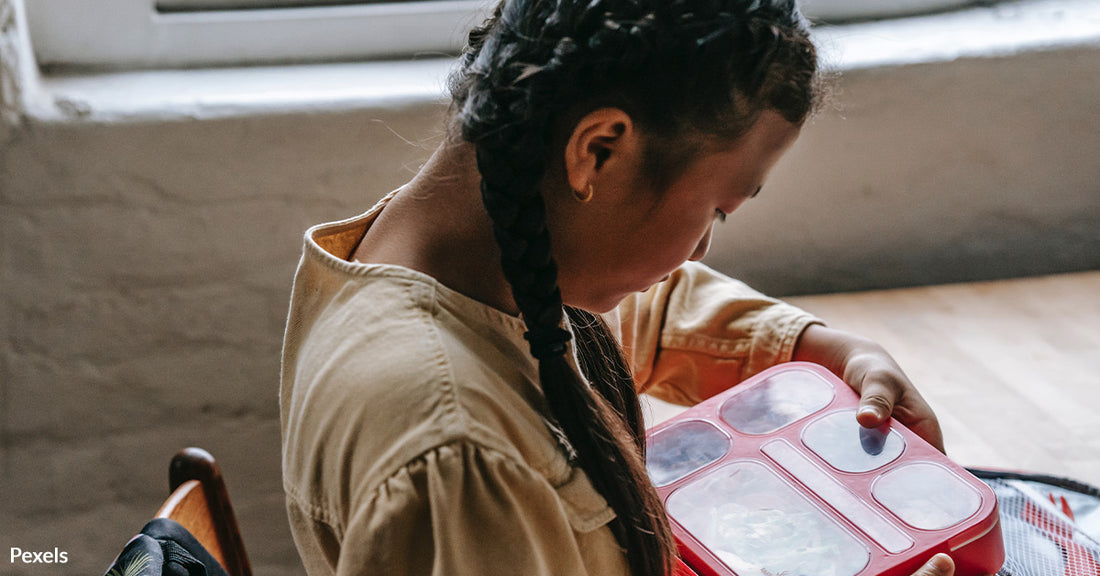Scientists Discover Millions of Plastic Particles Released by Microwaving Baby Food Containers
Matthew Russell
Microwaving plastic containers might be the quickest way to heat food, but it could also expose us to a staggering number of minuscule plastic particles. A recent study by scientists from the University of Nebraska-Lincoln reveals that microwaving plastic baby food containers can release billions of nanoplastics and millions of microplastics per square centimeter of container. According to the University of Nebraska-Lincoln, these particles pose potential risks to human health, especially for children who consume products stored in these containers.
As researchers delve deeper into the implications, responsible practices and viable alternatives are crucial for ensuring a healthier future for all.
 Photo: Pexels
Photo: PexelsMicrowaving plastic containers can release plastic particles into food and drinks.
Understanding the Alarming Discovery
It's been shown in scientific studies that microwaving polypropylene and polyethylene baby food containers led to the release of vast quantities of micro- and nanoplastics. While the health impact of consuming these particles remains unclear, the University of Nebraska study found that cultured embryonic kidney cells suffered significant damage upon exposure. Approximately 75% of kidney cells died after just two days of exposure to the highest particle concentrations. Such alarming findings call for a deeper understanding of the risks posed by these microscopic plastic particles.
With the potential health risks still unknown, the World Health Organization has already advised limiting exposure to these particles.
 Photo: Pexels
Photo: PexelsStudies show billions of nanoplastics and millions of microplastics per square centimeter of container.
“It is really important to know how many micro- and nanoplastics we are taking in,” said Kazi Albab Hussain, lead author of the study and a doctoral student in civil and environmental engineering at the University of Nebraska–Lincoln. “When we eat specific foods, we are generally informed or have an idea about their caloric content, sugar levels, other nutrients. I believe it’s equally important that we are aware of the number of plastic particles present in our food.
“Just as we understand the impact of calories and nutrients on our health, knowing the extent of plastic particle ingestion is crucial in understanding the potential harm they may cause," Hussain continued. "Many studies, including ours, are demonstrating that the toxicity of micro- and nanoplastics is highly linked to the level of exposure.”
 Photo: Pexels
Photo: PexelsMicrowaving polypropylene and polyethylene containers leads to particle release.
Infant and Toddler Vulnerability
Based on particle release models and per-capita food and drink consumption, infants drinking microwaved water and toddlers consuming microwaved dairy products face the highest relative concentrations of compounds like BPA, phthalates and polyvinyl chloride, Vox reports. Refrigeration and room-temperature storage of food or drink may also lead to the release of these harmful particles, studies show. Responsible choices and awareness can mitigate the potential risks and help protect the youngest members of our society.
 Photo: Pexels
Photo: PexelsInfants and toddlers consuming microwaved food are at higher risk.
A Call for Viable Alternatives
While avoiding plastic entirely may be challenging, choosing containers with lower particle release is an important step to reducing the risk of exposure to harmful compounds. And companies manufacturing plastic containers can do more to seek viable alternatives that release fewer micro- and nanoplastics. As consumers, our purchasing choices can also drive companies towards adopting sustainable practices that prioritize human health and environmental conservation.
In light of these discoveries, we must take proactive steps to reduce the risks associated with plastic containers and particles. Embracing responsible practices can make a significant difference in safeguarding our health and the planet. Here are some actions individuals can take to reduce the risk of plastic particles leeching into food and drinks:
- Embrace Safer Materials: Opt for containers made from materials that have been shown to release fewer micro- and nanoplastics, ensuring a healthier choice for both yourself and the environment.
- Reduce Microwaving Plastic: Consider limiting the use of plastic containers for microwaving food, especially when it involves items like baby food or products for children, to minimize potential exposure to plastic particles.
- Choose Sustainable Alternatives: Explore the benefits of using glass or stainless steel containers for storing food and beverages, reducing your reliance on plastic and contributing to a greener lifestyle.
- Share Knowledge and Empower Others: Educate those around you about the potential risks of plastic particle exposure, empowering them to make informed and health-conscious decisions regarding their food storage practices.
- Support Brands Committed to Sustainability: Make a positive impact by selecting products from companies actively seeking safer and more environmentally friendly packaging materials, supporting the move towards a more sustainable future.
- Advocate for Transparent Labels: Encourage clear labeling on products, indicating if they are "microplastics-free" or "nanoplastics-free," helping consumers make conscious choices for their well-being.
- Embrace Alternative Storage Solutions: Discover eco-friendly storage options such as silicone bags, beeswax wraps, or glass jars to minimize plastic use and reduce environmental impact.
- Mindful Disposal: Properly dispose of plastic containers, ensuring they find their way to recycling centers instead of ending up in our oceans or landfills, thus protecting marine life and ecosystems.
- Inspire Positive Change: Engage with plastic container manufacturers, encouraging them to prioritize health-conscious research and innovative solutions, leading to safer products for consumers.
- Raise Awareness for a Safer Future: Utilize social media and various platforms to spread awareness about the potential dangers of micro- and nanoplastics, inspiring collective efforts for a cleaner and healthier world.
 Photo: Pexels
Photo: PexelsResponsible choices can mitigate the potential health risks of plastic contamination.
A Path to a Healthier Future
Together, we can drive positive change, ensuring a healthier and safer future for all. By adopting responsible practices and advocating for alternatives, we protect ourselves, our children, and the environment from the unseen dangers of nanoplastic and microplastic particles.
Make a commitment to create a better tomorrow, where plastic particles no longer pose a threat to our well-being. Sign the pledge to protect food from plastic!

